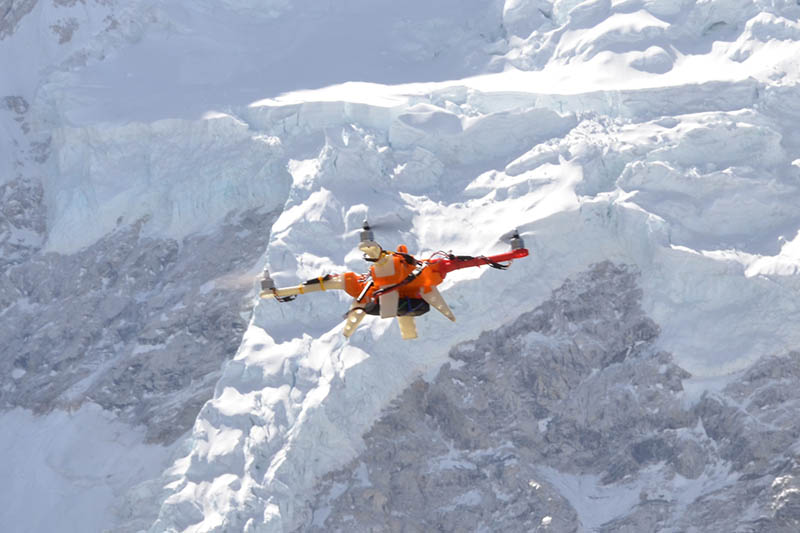US student conducts successful drone flight near Mt Everest
KATHMANDU: The drone flight test was successfully conducted at the location of both Windhorse and Guardian at Kala Patthar (18,500 ft) near Mt Everest on Tuesday morning.
Michael Kronmiller, who is the convener of the Kanjirowa-Bullis STEM (Science, Technology, Engineering and Mathematics) project, said that the drone flight test mission began with all members feeling fatigued due to low blood oxygen levels as a result of the altitude. “The drone is equipped with a thermal camera and visual First Person View camera for navigation and observation,” Kronmiler, who designed the drone in US, said.
According to him, the drone tested successfully is Lotus and its weight sits under 0.5 kilo. “It is a fully modular, 3D printer deign to allow for low cost and easy maintenance as a result of the high rate of failure of drone parts in high altitude conditions,” he added.
It took five minutes to set up the drone, ground station and transmitter, he shared after arriving in Capital. “Unfortunately it was discovered that the 360 degree Nikon was left onboard the helicopter after it had departed so that perspective is missing while the Nikon D3S, D500, and GoPro were present.”






